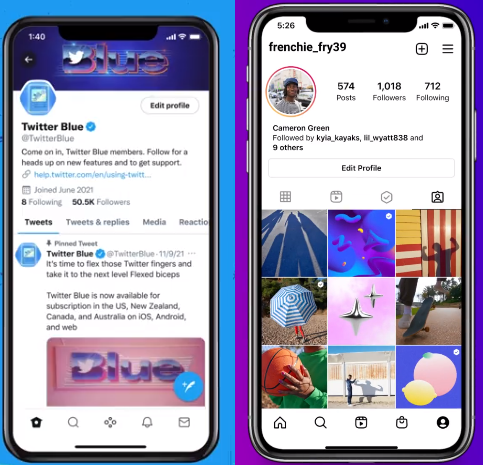While the NFT hype has died down significantly from its late 2021 peak, social platforms are still exploring ways to integrate NFTs, and enable users to display their digital artworks in new ways within their apps.
Snapchat looks set to be the latest to jump on the NFT trend, with The Financial Times reporting that the company is investigating a new process that would enable users to convert their owned NFTs into AR Lenses, which could then be inserted into their Snaps.
The process would essentially enable users to display three dimensional versions of their NFTs, where applicable, and use them as either a virtual face mask (a common use case for PFP projects), a background item, an additional object in the frame, etc.
That sounds like a fairly light integration of NFTs, as opposed to, say, Twitter, which has built a whole new profile display option for NFT art, or even Instagram, which is experimenting with a new profile element where users are able to display their owned items.

Though importantly, Snap’s integration moves your display options into its AR tools, which is where Snap’s looking to link into the next stage of digital connection. While Meta focuses on VR, and its evolving metaverse experience, Snap’s pinning its future on the development of AR, and the integration of digital and physical worlds, in a range of ways.
In this sense, and given the expected boom in AR with the arrival of AR glasses, Snap’s NFT integration plan could actually be more significant than these other options. Rather than bridging what would be Web2 to Web3 applications, Snap is looking a step ahead, which could put it in good stead to capitalize on the rising market for digital goods in new ways, as opposed to pinning them to what will likely become legacy systems.
And while the current NFT offerings may not end up being as big an element in the next stage as some may have thought (or hoped), there’s clearly a solid business case for digital items, and buying and selling things like digital clothes for your avatars, tools that you can use across different games and worlds, digital jewelry, and other items which can signify status and achievement.
That’s already the case in existing metaverse-like spaces, with users in Fortnite and Roblox displaying their personality and presence via various character skins and add-ons which reflect their skills and experience, in different ways.
Hand-drawn profile pictures feel like a misguided attempt to connect into this shift, but there will be a more advanced market for digital items, at some stage, which will become a major industry.
Snapchat could be looking to get ahead of this, and with AR-enabled digital items, and the further integration of its Bitmoji characters in the same way, that could help it stay ahead of the game in the next stage.



